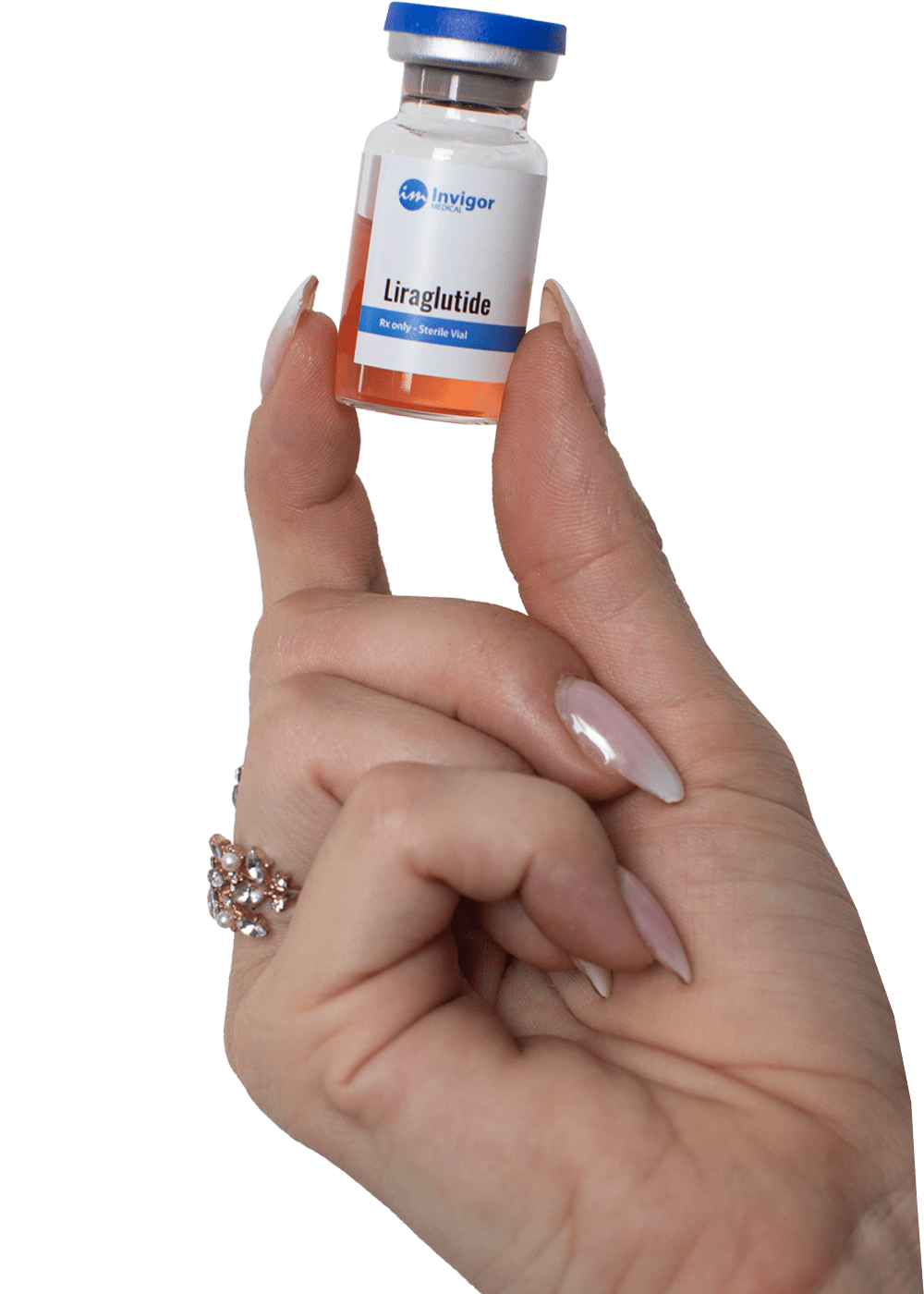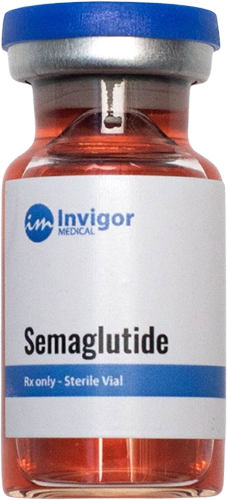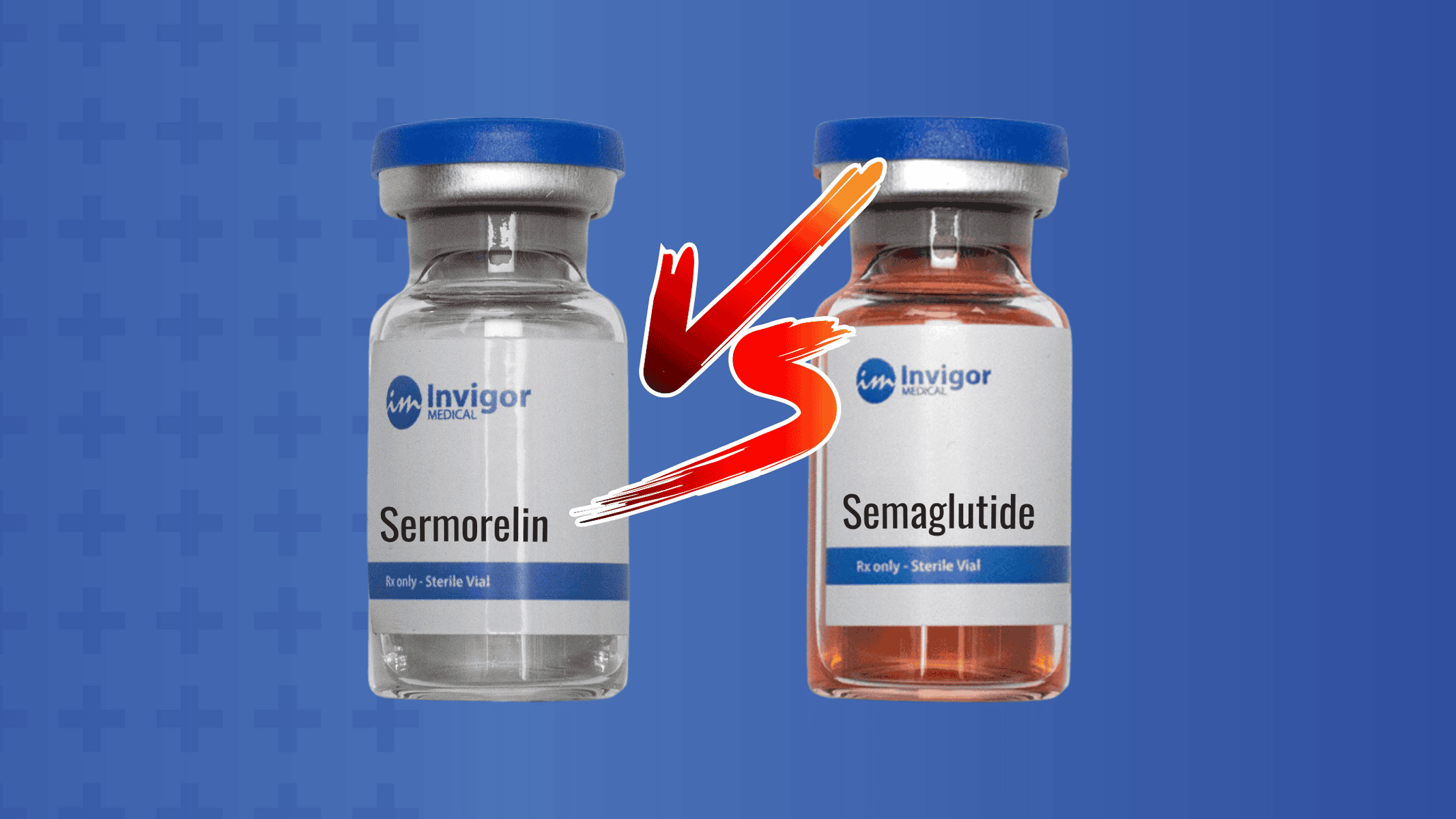Whether you are managing type 2 diabetes or obesity, it is important to fully understand all the treatment options available to you. One highly effective obesity treatment option is semaglutide. This medication belongs to a class of drugs called glucagon-like peptide-1 receptor agonists (GLP-1 RAs). These medications work by mimicking the action of naturally produced GLP-1, an incretin hormone that helps regulate blood sugar.
Semaglutide is available in both pill and injection forms. In addition to considering the range of anti-obesity medication options available, it is important to understand the pros and cons of semaglutide pills vs. injections. Compounded semaglutide is available by prescription only. Semaglutide powder is combined with vitamin B12 to minimize side effects and is administered as a subcutaneous injection.
Table of Contents
How semaglutide works
Semaglutide stimulates your pancreas to secrete insulin. This helps improve insulin sensitivity so your body can use energy from carbohydrates and fat more efficiently. Semaglutide also reduces glucagon release, reducing blood sugar levels.
Besides stabilizing your blood sugar, semaglutide slows stomach emptying. When your stomach feels full longer, your appetite is reduced. Besides acting in the gut to reduce hunger and blood sugar levels, semaglutide, along with insulin and amylin, also acts in the brain to reduce “food noise” and cravings.
Benefits of using semaglutide
Semaglutide treats obesity and type 2 diabetes. Potential semaglutide benefits include the following:
- Weight loss
- Improved blood sugar control: GLP-1 RAs, such as semaglutide, increase insulin secretion from the pancreas and reduce glucagon release. These improve blood sugar control and insulin sensitivity.
- Reduced cardiovascular risk
- Improved lipid metabolism: Semaglutide reduces low-density lipoproteins (LDL or bad cholesterol), total cholesterol, and triglycerides.4
- Improved sleep: Semaglutide can reduce the severity of obstructive sleep apnea. This condition causes a person to pause their breathing throughout the night.5
There are numerous cardiovascular and metabolic advantages to semaglutide, according to research. When evaluating semaglutide pills vs. injection, it is essential to consider whether both forms of administration are likely to produce similar results.
Semaglutide pills vs injections: Pros and cons
Semaglutide comes in pill and injectable form. This medication is indicated to treat type 2 diabetes and is used off label to treat obesity. For people who dislike the thought of self-injecting or have a fear of needles, an oral option for semaglutide may be preferred. Oral semaglutide is taken on an empty stomach and requires waiting for 30 minutes before eating or drinking anything.
Semaglutide injections are taken once a week, but even that may be too much for someone who does not like injections. Semaglutide injections may cause side effects, including injection site reactions. When using the injectable form of semaglutide, there are no restrictions on recent food or drink intake.
A 2021 review of studies compared the efficacy and safety of semaglutide pills and injections as an add-on to insulin for treating type 2 diabetes.
Researchers compared semaglutide pills (14mg) vs injections (0.5–1 mg) in the following ways: 6
- Glycemic control: Once daily, semaglutide pills resulted in a numerically greater reduction in blood sugar when compared to semaglutide injection (1mg), but the results were not statistically significant.
- Body weight: Semaglutide injection (1mg) resulted in a numerically higher reduction in body weight than semaglutide pills, but the results were not statistically significant.
- Blood pressure: There was no statistically significant difference in blood pressure reduction between semaglutide pills vs injection.
- Nausea, vomiting, and diarrhea: There was no statistically significant difference in gastrointestinal side effects between semaglutide pills vs injection.
More research is needed, as this study focused on people with type 2 diabetes who required insulin injections. Not all semaglutide dosage strengths were used in the comparison.

Semaglutide pills: How to take them and dosage information
Semaglutide pills are taken by mouth first thing in the morning, with no more than four ounces of water. You should not eat or drink anything, including any other oral medications, within 30 minutes of taking the pill. The pill should be swallowed without crushing or breaking it. Reviewers on Reddit state that the tablet coating has a bitter, battery-acid flavor.
The recommended starting dose is 3 mg daily for the first 30 days. After your body is used to the 3 mg dose, you may increase the dosage to 7 mg as directed by your doctor. This dosage is used when treating type 2 diabetes. Oral semaglutide is also used off-label to treat obesity.
A semaglutide 1 mg/mL suspension is also available. The medication is placed under the tongue and absorbed directly into the bloodstream, bypassing the gastrointestinal tract.
Semaglutide injections: How to use the pen and dosage information
For those who opt for semaglutide injections, it’s essential to learn how to use the pen device properly. The pen device comes pre-filled with the medication and is designed for easy and accurate administration.
Semaglutide comes in five dosage strengths:
- 0.25 mg
- 0.5 mg
- 1 mg
- 1.7 mg
- 2.4 mg
Following your healthcare provider’s instructions, semaglutide is injected according to the following schedule:
- Month 1: (weeks 1-4): take 0.25 mg each week
- Month 2: (weeks 5-8): take 0.5 mg each week
- Month 3: (weeks 9-12): take 1 mg each week
- Month 4: (weeks 13-16): take 1.7 mg each week
- Month 5: (weeks 17 and onward): 2.4 mg each week (full dose)
Semaglutide is typically administered once a week. The dose is gradually increased until you reach the maintenance dose. However, your healthcare provider may adjust the dose based on your response and tolerability.
Compounded semaglutide may need to be reconstituted before it can be injected. Your compounding pharmacy will provide instructions on how much diluent to add to the semaglutide powder and how to mix and inject semaglutide.

Choosing the right option: Semaglutide pills vs injections
When considering semaglutide pills vs injections, it is important to consider the following points:7
- Dosage requirements: Semaglutide pills are taken once daily in the morning and are limited by recent food or drink consumption. Semaglutide injections are taken once a week and are not limited by diet.
- Storage: Semaglutide injections require refrigeration, and semaglutide pills do not.
- Adherence: It may be easier to adhere to a once weekly semaglutide injection schedule vs a daily oral pill schedule.
- Cost: Costs will vary, but it is important to consider insurance coverage and medication costs.
Semaglutide side effects and precautions
As with any medication, semaglutide comes with potential side effects and precautions. Common side effects include nausea, diarrhea, vomiting, and constipation. These side effects are usually mild and improve over time. However, if they persist or become severe, it’s important to consult your healthcare provider. In rare cases, semaglutide may cause more serious side effects, such as pancreatitis or thyroid tumors. It’s crucial to be aware of these risks and report any unusual symptoms to your healthcare provider promptly.
Some of the more common semaglutide side effects include:
- Nausea
- Diarrhea
- Vomiting
- Constipation
- Stomach pain
- Headache
- Fatigue
- Heartburn
- Dizziness
- Stomach bloating
- Burping/flatulence
- Low blood sugar in people with type 2 diabetes
- Gas
- Gastroenteritis
- Acid reflux
- Stomach irritation
- Viral gastroenteritis
- Hair loss
Conclusion: Making an informed decision
Semaglutide is an effective medication for managing type 2 diabetes and promoting weight loss. Whether you choose semaglutide pills or injections, it’s essential to weigh the pros and cons of each option. Consider factors such as convenience, effectiveness, and your comfort level with self-injection. Discuss your preferences and goals with your healthcare provider to make an informed decision. Invigor Medical can help you achieve your weight loss goals. Talk with a treatment specialist about our weight-loss treatment options and learn more about semaglutide for weight loss.










